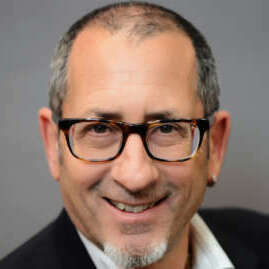Reskilling means providing the existing workforce with the training and career pathway to let employees acquire new skills needed by the agency. Reskilling must greatly expand if the government is to meet its workforce requirements in the coming years.
That’s according to Jeri Buchholz, formerly the chief human capital officer at NASA, now a strategic advisor to workforce services firm Acendre.
Buchholz sees two other HR and human capital-related needs in the immediate future, in addition to skills development and maintenance.
First, “The federal government is really overdue for retool more modern tools that help them manage shocking workload when it comes to hiring people,” Buchholz said. The shocking workload stems from the fact that for many posted job openings, an agency may get hundreds of thousands of applications.
“I don’t think people realize how many people apply for federal government jobs,” she added.
Second, the government needs “better assessments to help [agencies] get to those individuals that are a good mission match for their organization.”
As for reskilling, Buchholz said, “Instead of waiting until people’s skill sets have become antique, adopt a policy of continuous development and growth, so that the workforce is continuously reskilling to match the mission that’s coming down the road in a year, two years, five years.”
It all means new strategies and enabling tools are needed for both the HR function itself as well as for the broader function of choosing, hiring and retaining talent.
As for the HR workload, it matters if only because of the danger that an ideal applicant could lost in the shuffle. One potential answers in artificial intelligence, Buchholz said, algorithms to speed up the sorting and categorizing of resumes. But, she cautioned, not to make decisions necessarily.
“AI is not intended to replace human judgment. AI is intended to support a business process,” she said. It can evaluate resumes, for example, on scored questions. But skills like judgement or leadership require human interaction, such as structured interviews.
Where HR interacts with the hiring components within their agencies, Buchholhz said there’s a strong need for technology that can provide more efficient and automated workflows and handoffs, all operating within the statutory requirements that govern federal hiring.
“In every efficiency assessment, like Lean Six Sigma, that I ever did, it was always the handoffs between the HR office and the hiring manager that added time to the process,” she said. “Really well thought through workflows and technology that supports those workflows can really, really help” cut time and drudgery out of the talent acquisition process.
Buchholz disputes the notion that the federal hiring process is too long, noting that many of the highly-regarded technology employers have long, elaborate processes of their own. Some jobs just take as long as they take.
“It takes 18 months to hire an astronaut; that is the right amount of time,” she said. When you are hiring someone in a key position for which not just a skill set, but also leadership ability, and mission match, are equally critical to the success in that position — then you need to take your time. Make sure that the individual you’re bringing on board, that you’re making a 30-year, $3 million dollar commitment to the US taxpayer, is in fact, the right person for that job.”
As for matching up the workforce and the skills agencies needed, Buchholz said that requires strategic, long-term thinking. So-called “sand charts” that show decreasing and increasing mission needs can help managers clarify they types of skills they’ll need down the line.
“And if you look at that in a 10 year window, and you take all of your mission critical occupations, and you sand chart them out, that starts to lay out a really nice hiring strategy for you. That’s strategic thinking. And there are certainly assessments and tools that can be used to help you work your way through that process,” Buchholz said.
She said agencies in the long run will continue to need a combination of online and in-person learning systems to maintain the skills they require.
“Ideally, a blended model is the way to go. Because other things happen in training, besides the acquisition of knowledge, relationships are built, sometimes very important relationships,” Buchholz said.
The Overview of Human Capital Management at GSA
HR was traditionally a very transactional business. It was more just about processing paper, paying people and enrolling them in benefits. But, really, at the heart of it, good human capital shops are strategic partners.
Traci DiMartini
Chief Human Capital Officer, General Services Administration
Much like human resources, [acquisition] changed from purely transactional to buying goods and services to being more strategic. So we need individuals with critical thinking skills, with resilience, the ability to adapt and figure out how to make things happen not only in a global market, but nationwide.
Traci DiMartini
Chief Human Capital Officer, General Services Administration
Skill Development in Government
When you are hiring someone in a key position where not just a skill set, but also leadership ability, and mission match are equally critical to the success in that position, then you need to take your time.
Jeri Buchholz
Strategic Advisor, Acendre and former Chief Human Capital Officer, NASA
Hour HR processes, human capital management is all about influence, and all about helping mission leaders see things in new ways, apply people solutions to long standing problems, and to lead people to the very best of their ability.
Jeri Buchholz
Strategic Advisor, Acendre and former Chief Human Capital Officer, NASA
Listen to the full show:
Copyright
© 2025 Federal News Network. All rights reserved. This website is not intended for users located within the European Economic Area.









